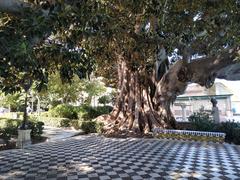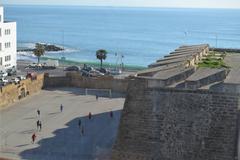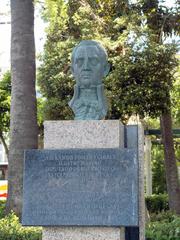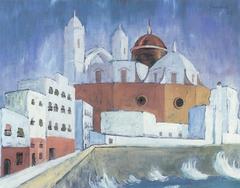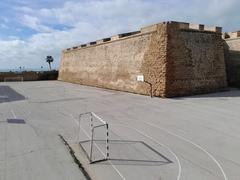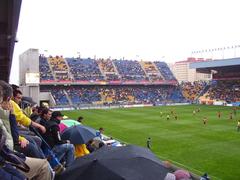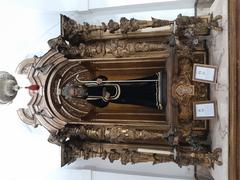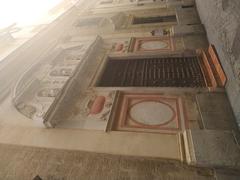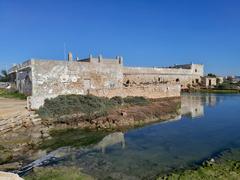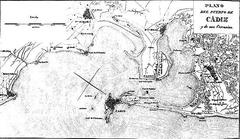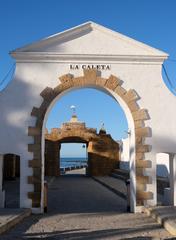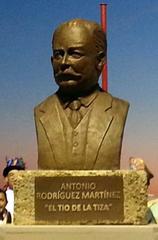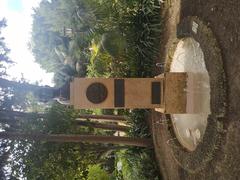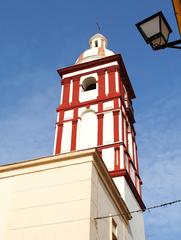Hospicio Provincial Edificio Valcárcel: Visiting Hours, Tickets, and Cádiz Historical Sites Guide
Date: 14/06/2025
Introduction
The Hospicio Provincial, also known as Edificio Valcárcel, stands as one of Cádiz’s most significant historical landmarks. Located in the heart of the city, this 18th-century building not only embodies the architectural and social ideals of its time but also offers a unique window into Cádiz’s evolution from the Enlightenment through the present day. This comprehensive guide provides everything you need to plan your visit, including opening hours, ticketing details, accessibility, historical context, and travel tips for exploring both the hospice and nearby attractions. For official updates and detailed visitor information, consult the Official Cádiz Tourism Website and the Guía de Cádiz.
Table of Contents
- Introduction
- Historical Overview
- Architectural Features and Cultural Significance
- Visitor Information
- Visitor Highlights
- Nearby Attractions
- Frequently Asked Questions (FAQ)
- Conclusion
- References
Historical Overview
Origins and Purpose
The Hospicio Provincial was established in the mid-18th century by the Cofradía de la Santa Caridad, a religious brotherhood devoted to charitable work. Completed in 1763 under the guidance of architect Torcuato Cayón, the hospice was conceived as a refuge for orphans and the impoverished, reflecting the Enlightenment ideals of humanitarianism, social responsibility, and civic progress (turismo.cadiz.es).
Societal Impact
As Cádiz flourished through Atlantic trade, the hospice became part of a broader network of institutions addressing urban growth and social care. Over the centuries, it has served various functions, including as a hospital, administrative center, and cultural venue, always maintaining its core mission of service to the community (visitcostablancaspain.com).
Architectural Features and Cultural Significance
Exterior and Façade
- Style: The building exemplifies the transition from ornate Baroque to academic classicism, a hallmark of late 18th-century Spanish architecture.
- Facade: Its three-level façade is punctuated by pilasters and crowned with a central marble portal, featuring Doric columns and a classical pediment, conveying both grandeur and solemnity (Guía de Cádiz).
- Windows: The first-floor windows display rich Baroque decoration, with elaborate ironwork and moldings, while upper floors adopt simpler, more functional lines (turismo.cadiz.es).
Interior and Layout
- Courtyards: Interconnected courtyards provide natural light, ventilation, and tranquil spaces for reflection.
- Chapel: The hospice’s chapel features religious iconography and original 18th-century artwork, underscoring its dual spiritual and charitable mission.
- Functional Spaces: Wide corridors and communal rooms were designed for hygiene, order, and accessibility—a progressive approach for public buildings of its time.
Heritage Status
Declared a Bien de Interés Cultural (BIC), the hospice is protected under Spanish heritage law, ensuring ongoing preservation and restoration (es.wikipedia.org).
Visitor Information
Opening Hours
As of June 2025, the general opening hours are:
- Tuesday to Sunday: 10:00 AM – 6:00 PM
- Closed on Mondays and public holidays.
Note: Hours may vary for special events or public holidays. Always check the official Cádiz tourism website or local visitor centers before your visit.
Tickets and Admission
- General Admission: Usually free of charge for all visitors.
- Guided Tours: May require advance booking and a modest fee. Tours are available in Spanish and English and provide valuable historical and architectural insights.
- Special Events: Some exhibitions, workshops, or concerts may have separate ticketing.
Accessibility
- Mobility: The building is partially accessible, with ramps and elevators in key areas. Some historic sections may have steps or uneven flooring.
- Assistance: Visitors with mobility needs should contact the visitor center ahead of time for specific information or support.
Guided Tours & Events
- Guided Tours: Available in multiple languages, offering detailed history and context.
- Cultural Events: The hospice frequently hosts exhibitions, concerts, and community activities—especially during festivals and heritage days.
Getting There & Visitor Tips
- Location: Centrally situated in Cádiz’s historic quarter, near major sites like the Catedral Nueva and Plaza de San Juan de Dios.
- Transport: Easily accessible on foot, by local bus, taxi, or bicycle. Parking is limited in the area, so walking is recommended whenever possible.
- Best Time to Visit: Early mornings or late afternoons offer ideal lighting for photographs and a quieter atmosphere.
Visitor Highlights
- Main Marble Portal: The classical entrance with Doric columns is a must-see example of 18th-century craftsmanship.
- First-Floor Windows: Appreciate the intricate Baroque details and ornamental ironwork.
- Courtyards: Enjoy the serenity and light-filled spaces, perfect for photography and contemplation.
- Chapel: Admire original religious artwork and altarpieces.
- Historical Exhibits: Some rooms may feature archival materials, offering deeper insights into Cádiz’s social history.
Nearby Attractions
Enhance your visit by exploring these nearby Cádiz landmarks:
- Catedral Nueva – The city’s monumental 18th-century cathedral.
- Plaza de San Juan de Dios – Vibrant main square with neoclassical and modernist façades.
- La Caleta Beach – Picturesque city beach, ideal for a seaside stroll.
- Bastions of Santa Catalina and San Sebastián – Historic fortifications with panoramic Atlantic views.
- Parque Genovés – Lush botanical gardens perfect for relaxation.
For dining and shopping, the surrounding historic center offers traditional tapas bars, artisanal shops, and local markets (Visit Costa Blanca Spain).
Frequently Asked Questions (FAQ)
Q: What are the visiting hours for the Hospicio Provincial?
A: Typically Tuesday to Sunday, 10:00 AM–6:00 PM. Always check for seasonal or holiday variations.
Q: Is there an entrance fee?
A: General admission is free; some guided tours or special events may carry a small charge.
Q: Is the site wheelchair accessible?
A: The main public areas are accessible, but some historic zones may have limited access.
Q: Are guided tours available?
A: Yes, in Spanish and English, often requiring advance reservation.
Q: Can I take photographs inside?
A: Photography is generally allowed in public areas, but check on-site for specific restrictions.
Q: What is the best time to visit?
A: Spring through autumn (April–October) offers pleasant weather and extended hours.
Q: How do I get there?
A: The site is within walking distance of most major Cádiz attractions and accessible by public transport.
Conclusion
The Hospicio Provincial (Edificio Valcárcel) is more than a historical building—it is a living testament to Cádiz’s Enlightenment values, architectural innovation, and enduring charitable spirit. Its harmonious blend of Baroque and classical features, thoughtfully preserved interiors, and active role in Cádiz’s cultural life make it essential for any visitor interested in history, architecture, or social heritage.
With free admission, accessible facilities, and a central location near other city landmarks, the hospice is welcoming to all. For the latest schedules, event listings, and visitor updates, refer to the Official Cádiz Tourism Website and consider downloading the Audiala app for additional resources.
Plan your visit to this emblematic Cádiz site and immerse yourself in the city’s vibrant past and present.
